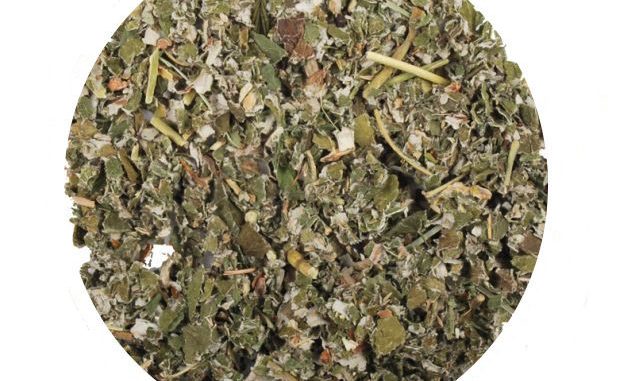
RASPBERRY LEAVES
(Caffeine Free Herbal Tea)
HACCP Certified.
Serving Size: 1.5g /cup
Region(s): Lodz, Poland
Shipping Port: Gdansk
Grade(s): 1st grade
Growing Altitudes: 500 – 900 feet above sea level
Manufacture Type(s): Field grown
Cup Characteristics:
Leaves carry a neutral flavour tending towards a grassy character.
Caffeine free.
Infusion: Pale grassy infusion.
Ingredients: Raspberry leaves
INFORMATION
Infusions made from the leaves of Raspberry bushes, (Latin: Rubus idaeus) have been consumed for millenia for reasons ranging from the soothing of throat infections to easing leg cramps. Botanical archaeology indicates that raspberries originated in what is now Central Europe – in fact, not far from Lublin, Poland where we have sourced our offering. From there it is believed that the plants were carried either in seed or seedling form, by ancient migrants across the Baring Land Mass, the strip of land that used to join Alaska and Russia thousands of years ago. As the population of North America grew over time, the hardy raspberry bush came to grow wild throughout the continent. Archaeologists studying the ancient cultures of North America discovered evidence that the women of the ancient Cherokee, Iroquois, and Mohawk nations took advantage of the plant’s abundance and regularly consuming it during pregnancy. They believed that drinking raspberry leaf tea helped to ease discomfort during childbirth. In fact, these ancient peoples believed that the Raspberry bush was a gift from the Great Spirit, put on earth to aid in the propagation of the human race.
Recent science indicates that there may be some truth to the ancients’ claim since raspberry leaves contain fragrine, an alkaloid that helps tone the pelvis and uterus. Raspberry leaf also contains high quantities of Vitamins A, B Complex, C, and E, as well as many essential minerals, and high levels of tannin. In order to ensure the high vitamin and mineral content, our suppliers harvest the leaves of the raspberry plant in summer before the berries ripen and flavonoid levels are high. The leaves are then dried and processed in a method similar to that of regular tea. Comparisons can also be drawn between the he robust, full-bodied flavour of raspberry leaf tea, and that of traditional black tea. Brew a pot today and see why raspberry leaf makes an excellent caffeine free alternative to the morning cuppa! Alternatively, our raspberry leaf can be used as a decorative flourish to blended teas.
Hot tea brewing method:
Bring filtered or freshly drawn cold water to a rolling boil. Place 1 teaspoon, 1 tea bag or 1 Q3 single serve packet for each 7-9oz/200-260ml of fluid volume in the teapot. Pour the boiling water into the teapot. Cover and let steep for 5-10 minutes according to taste (the longer the steeping time, the better the flavour as more fruit or herb flavour is extracted). Garnish and sweeten to taste.
Iced tea brewing method 1 (Pitcher):
(to make 1 litre/quart): Place 6 slightly heaping teaspoons, 6 tea bags or 6 Q3 single serve packets into a teapot or heat resistant pitcher. Using filtered or freshly drawn cold water, boil and pour 1¼ cups/315ml into the pot. Steep for 5 minutes. Quarter fill a serving pitcher with cold water. Pour the tea into your serving pitcher straining the leaves or removing the tea bags. Add ice and top-up the pitcher with cold water. Garnish and sweeten to taste. A rule of thumb when preparing fresh brewed iced tea is to increase the strength of hot tea since it will be poured over ice and diluted with cold water. (Note: Some luxury quality teas may turn cloudy when poured over ice. This is a sign of luxury quality and nothing to worry about.)
Iced tea brewing method 2 (Individual Serving):
Place 1 slightly heaping teaspoon, 1 tea bag or 1 Q3 single serve packet into a teapot for each serving required. Using filtered or freshly drawn cold water, boil and pour 6-7oz/170-200ml per serving into the pot. Cover and let steep for 5 minutes. Add hot tea to a 12oz/375ml acrylic glass filled with ice, straining the leaves or removing the tea bags. Not all of the tea will fit, allowing for approximately an additional ½ serving. Sweeten and/or add lemon to taste. A rule of thumb when preparing fresh brewed iced tea is to increase the strength of hot tea since it will be poured over ice and diluted. (Note: Some luxury quality teas may turn cloudy when poured over ice. This is a sign of luxury quality and nothing to worry about!)
FOOD SAFETY ADVISORY:
We strongly recommend using filtered or freshly drawn cold water brought to a rolling boil when brewing all types of tea. Today’s water has been known to carry viruses, parasites and bacteria. Boiling the water will kill these elements and reduce the potential incidence of water-borne illnesses.
Ideal Brewing Temperature: 100°C/212°F.
Minimum Brewing Temperature: 90°C/194°F.
